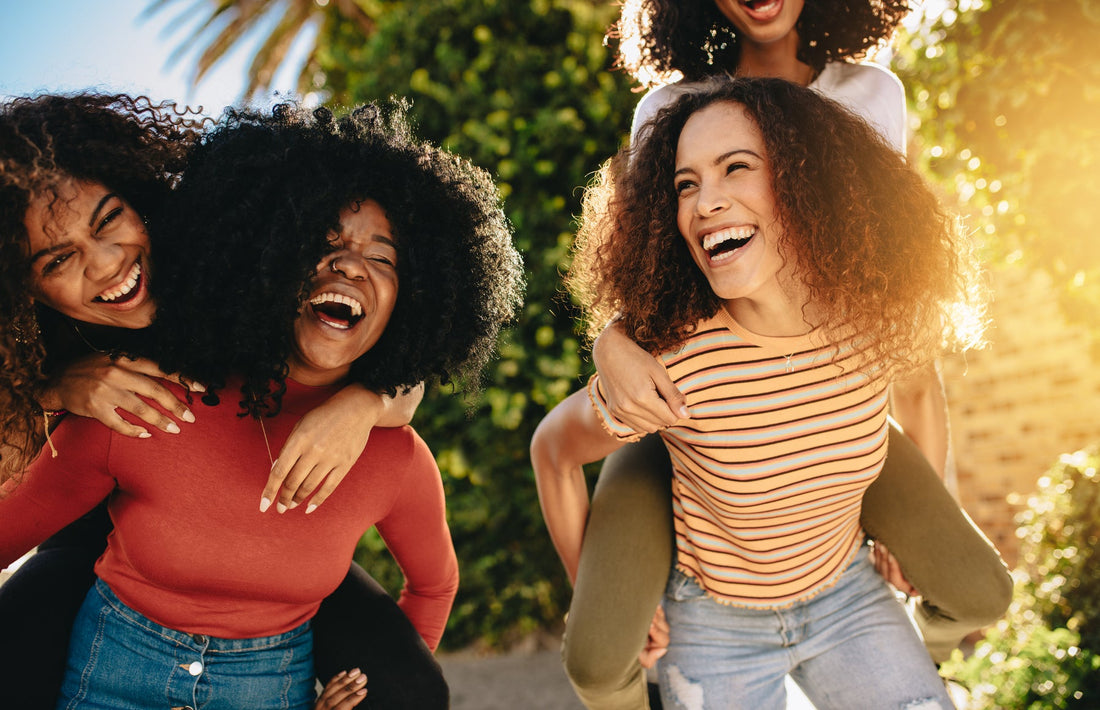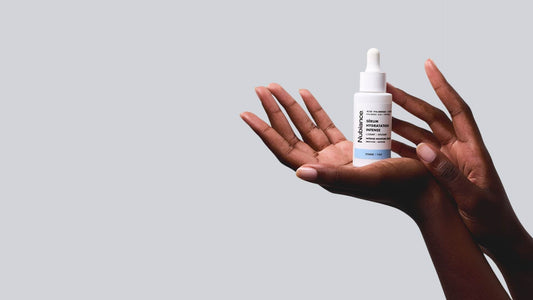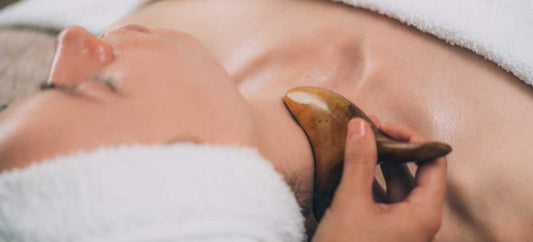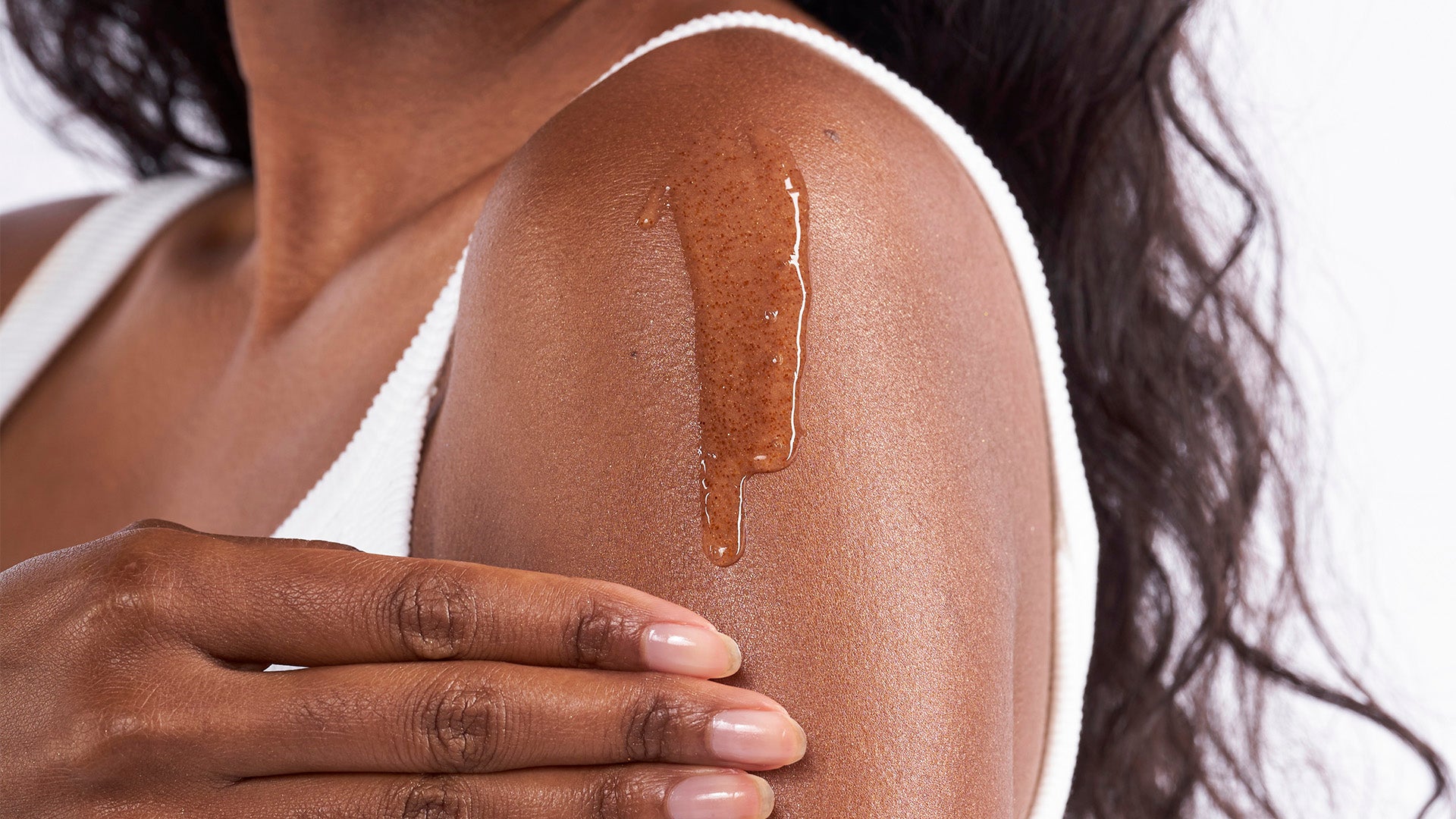
What are the 3 types of hyperpigmentation and how to treat them?
Partager
Hyperpigmentation of the skin comes from an overproduction of melanin. It manifests itself in various ways depending on the person and their skin tone. On Nubian skin, it is common to see this type of skin condition due to the high level of melanin . In this article, we describe the three types of hyperpigmentation and the solutions that exist to treat them.
Causes of hyperpigmentation
Hyperpigmentation is a reaction that is characterized by an increase in melanin on certain areas of the skin.
This overproduction of melanin comes from numerous internal factors: age, hormonal upheavals, and genetic predispositions. It also comes from external factors: excessive exposure to the sun, irritation and the use of unsuitable cosmetic products.

How does hyperpigmentation manifest?
Hyperpigmentation on black skin is characterized by an overproduction of melanin, particularly observable on nubian skin due to their high melanin level. This skin condition presents in a varied manner depending on the individual and their complexion. In this article, let's decipher the three types of hyperpigmentation and the effective solutions to treat them.
Hyperpigmentation on black skin
On nubian skin, hyperpigmentation can take various forms due to the high level of melanin. It is common to observe skin manifestations such as brown spots and dark areas. This reaction can be triggered by internal factors such as age and hormonal changes, as well as external factors such as excessive exposure to the sun and the use of unsuitable cosmetic products. A thorough understanding of hyperpigmentation in black skin is essential to choosing treatment solutions adapted to this type of skin tone.
Hyperpigmentation on the face
Hyperpigmentation on the face , also known as pregnancy mask or melasma, is linked to hormonal changes. Affecting 10 to 15% of pregnant women, melasma is characterized by brown spots and irregular dark areas on the face. The different variations of melasma, such as centrofacial, malar and mandibular melasma, require a specific approach for their treatment. To learn more about the prevention and treatment of pregnancy masks on black skin, explore our dedicated article.
The 3 types of skin hyperpigmentation
The pregnancy mask
Also called melasma or chloasma, this phenomenon of hyperpigmentation comes from hormonal changes. The pregnancy mask affects 10 to 15% of pregnant women. It is characterized by the manifestation of brown spots and dark, irregular areas on the face. It disappears sometime after pregnancy.
Genetic profile, exposure to sunlight, estrogen, taking certain medications, and endocrine disorders can increase the likelihood of developing melasma.
There are different types of melasma:
- Centrofacial melasma: it affects the forehead, chin and upper lip;
- Malar melasma: it is located in the cheeks and nose;
- Mandibular melasma: it is found on the bottom of the cheeks and jaws.
👉🏾 Would you like to know more about the prevention and treatment of pregnancy masks on black skin? We let you discover this article .
Post-inflammatory hyperpigmentation
Post-inflammatory hyperpigmentation or HPI for short, manifests itself as more or less dark spots depending on skin tone, after a wound has healed.
It appears as follows:
- Lesions, inflammations or irritations of the skin (burns, insect bites, microinjuries, contact eczema, acne);
- Aggressive and inappropriate cosmetic treatments.
It affects all skin types, but appears more in people who have olive, mixed and dark skin.
It affects the face and body, particularly the areas most exposed to the sun.
Handling acne breakouts and prolonged exposure to the sun can worsen the symptoms of inflammatory hyperpigmentation.
Some studies show that one in two people with acne-prone skin suffers from post-inflammatory hyperpigmentation.
Lentigo
Lentigo (or lentigines in the plural) is the scientific name given to sun or age spots.
This overproduction of melanin particularly affects the Asian and Caucasian population. It appears on the hands, face, neckline, shoulders and arms. It is the result of prolonged exposure to the sun and skin aging.
It generally affects people over the age of 40 and concerns more than 90% of individuals over the age of 70.
With age, the skin becomes vulnerable to external aggressions and is no longer able to protect itself from UV rays, which cause age spots.
Taking certain photosensitizing medications promotes lentigo.

The different treatments to combat hyperpigmentation
Use peeling to combat hyperpigmentation
Chemical peelsThis process involves exfoliating the skin with an acidic substance. Exfoliation helps remove dead cells from the dermis, stimulate the growth of new cells, treat imperfections and reveal new skin.
Superficial peelingIt helps exfoliate the superficial layers of the dermis. It poses no risk to the skin, but the patient may experience minor redness and irritation. It is forbidden to expose the exfoliated area to the sun for two weeks.
The average peelIt acts under the stratum corneum of the epidermis and the superficial dermis to treat acne and pigment spots . A week of leave is expected until the skin finishes peeling.
Deep peelingIt is used much less than the first two and requires local or general anesthesia. The skin must be prepared before this type of treatment with specific creams. After this type of intervention, the patient must avoid all sun exposure.
Glycolic peelingGlycolic acid peeling gives good results on dark spots . However, it is not recommended for dark skin, as they are at risk of inflammatory hyperpigmentation.
Laser and pulsed light
The flash lamp is effective on dark spots for melasma patients. However, it is possible to notice a reappearance of dark spots after this operation. Depigmented areas may also surface.
The low-energy pigment laser limits side effects. However, it is necessary to do several sessions to have convincing results.
Dermocosmetic care

Dermocosmetic treatments guarantee long-term results and are much less expensive than all the treatments mentioned above. Compared to aesthetic treatments, its alternatives prove ideal.
They are effective for types of hyperpigmentation that affect dark skin: post-inflammatory hyperpigmentation and pregnancy mask.
Treat skin hyperpigmentation with Nubiance ranges
The anti-stain routine
She is composed :
- HRB-3 anti-spot day care . It reduces spots and protects the skin from the sun;
- HRB-3 anti-spot night treatment . It corrects hyperpigmentation during the night and boosts collagen production in the skin.
Discover our complete anti-stain range
It involves :
- The HRB-3 anti-dark spot radiance serum . It eliminates stains thanks to its gentle peeling effect;
- HRB-3 anti-dark spot day care . It limits the pigmentation of brown spots caused by UVA and UVB rays thanks to its SPF30 sun protection;
- HRB-3 anti-spot night treatment. It reduces spots and strengthens the skin overnight;
- HRB-3 anti-stain body lotion . It corrects hyperpigmentation spots present on the body and hydrates the skin thanks to shea butter and glycerin.
👉🏾 To find out more about this topic, you can read our article on the routine to adopt to eradicate black spots !




